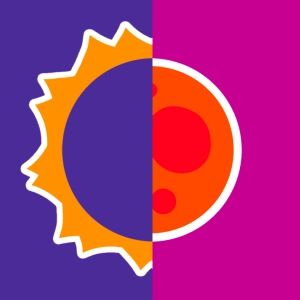 Lunar eclipse or solar eclipse?
Lunar eclipse or solar eclipse?
Learning objectives
- Distinguish between solar and lunar eclipses.
- Identify zones of shadow and penumbra, then make the connection with total and partial eclipses.
A lunar eclipse and a solar eclipse are both astronomical events that occur when one celestial body moves into the shadow of another.
Lunar Eclipse:
- What Happens: A lunar eclipse occurs when the Earth comes between the Sun and the Moon, casting a shadow on the Moon.
- Visibility: A lunar eclipse can be seen from anywhere on the nighttime side of the Earth.
- Appearance: During a total lunar eclipse, the Moon can appear reddish in color due to scattering of sunlight through the Earth's atmosphere (often referred to as a "Blood Moon").
Solar Eclipse:
- What Happens: A solar eclipse happens when the Moon passes between the Sun and the Earth, casting a shadow on the Earth.
- Types: Solar eclipses can be total, partial, or annular, depending on the apparent size of the Moon relative to the Sun during the eclipse and the location where you are observing.
- Visibility: A solar eclipse is visible from a much smaller area on Earth. Only those in the path of the Moon's shadow can see the eclipse in its totality.
- Safety: Viewing a solar eclipse requires special eye protection to prevent damage to the eyes, as looking directly at the Sun, except during the short phase of totality.
EduMedia's Total Solar Eclipse video explains these phenomena.

Discover EduMedia for free
The interactive encyclopedia that brings science and math to life in the classroom.
Over 1,000 resources





